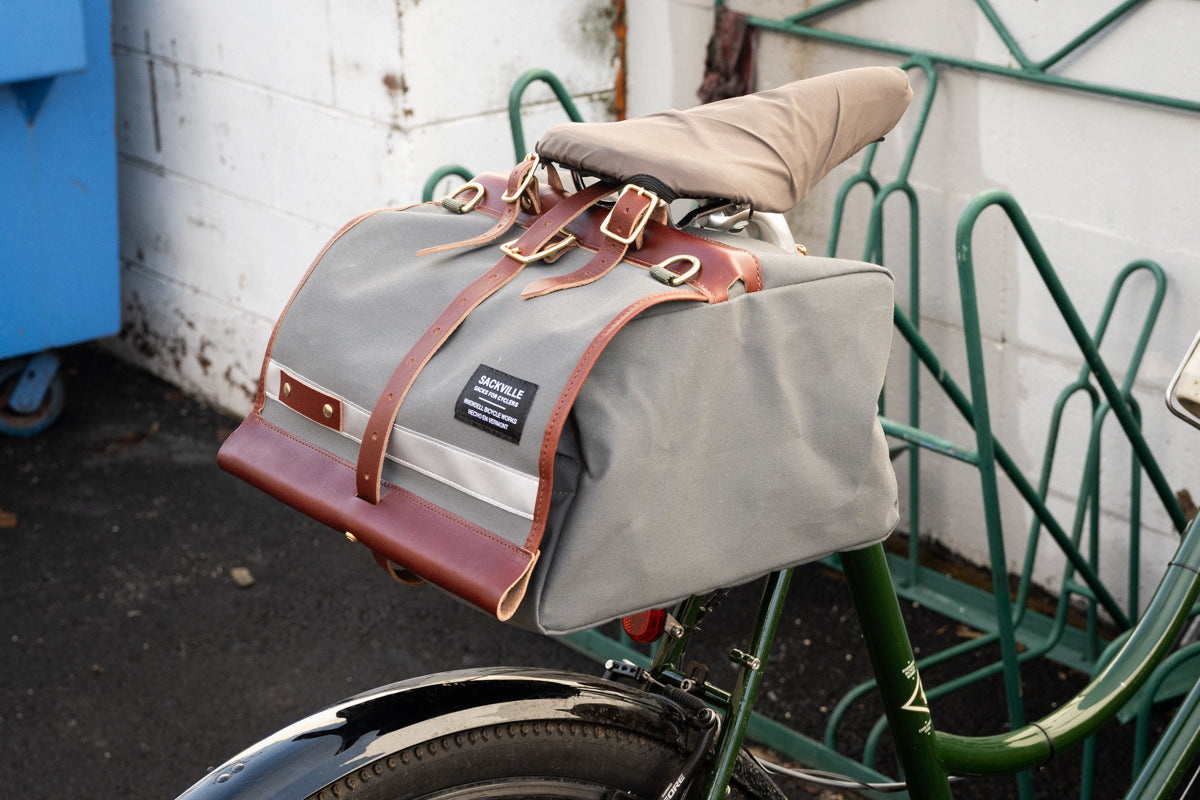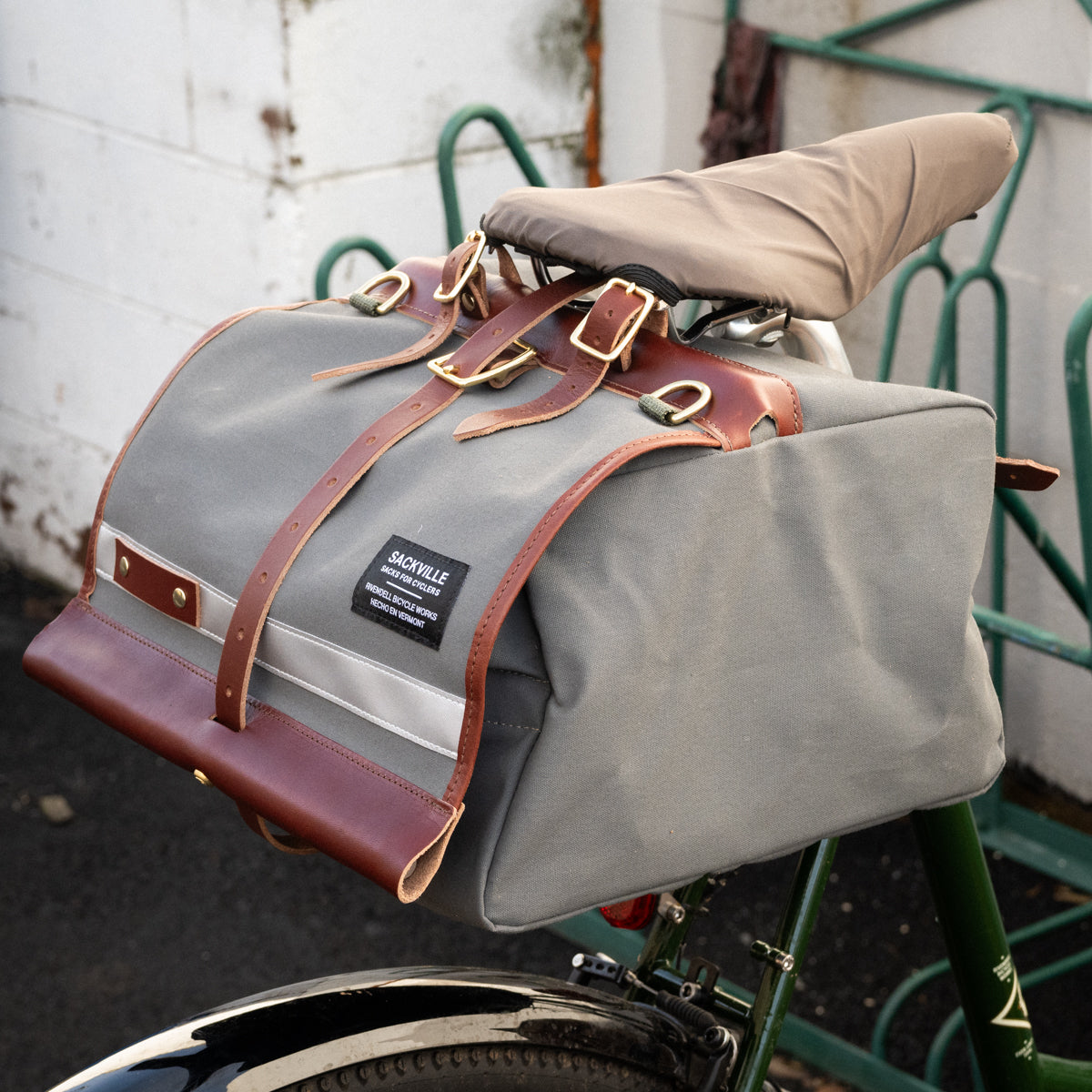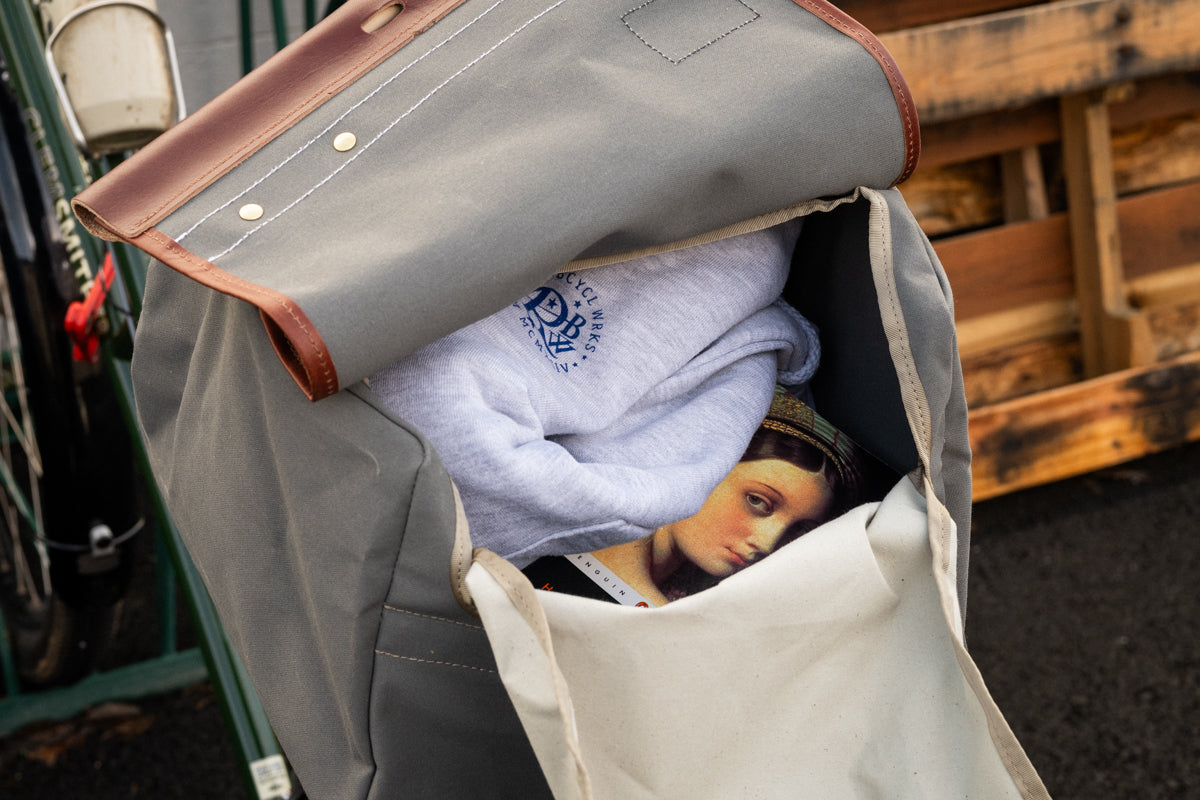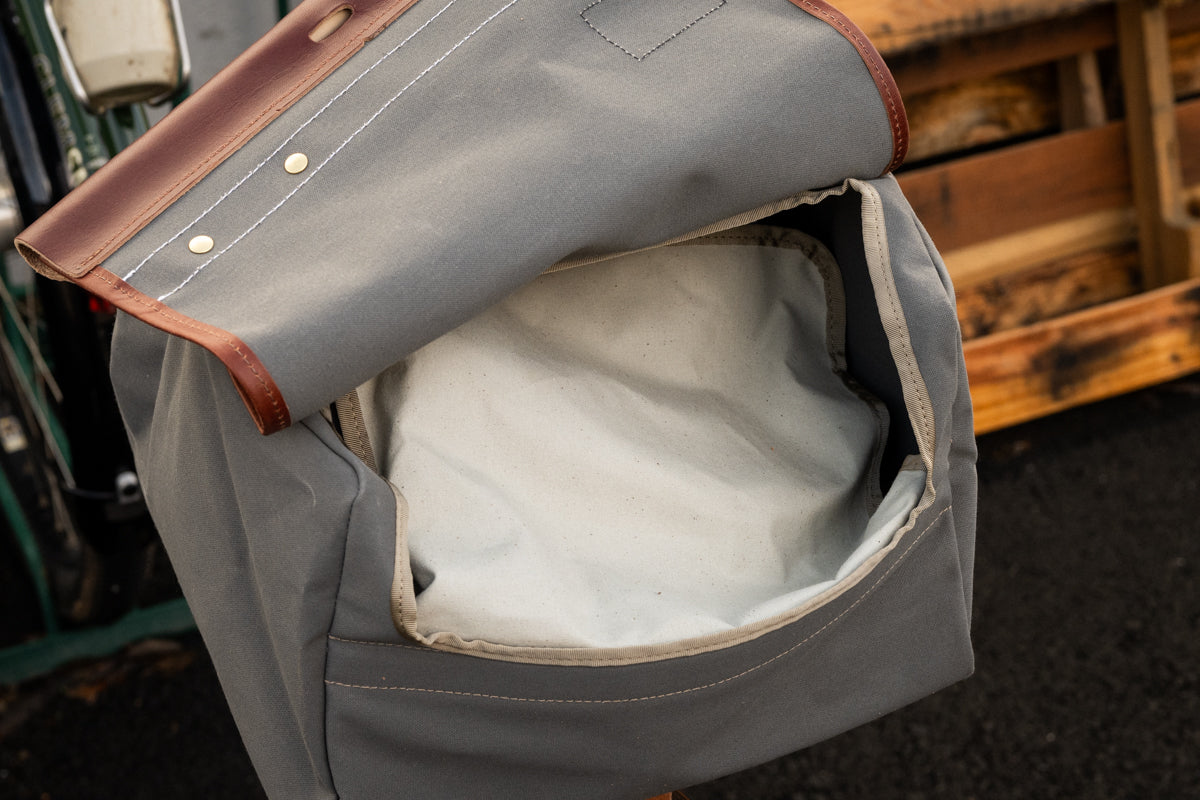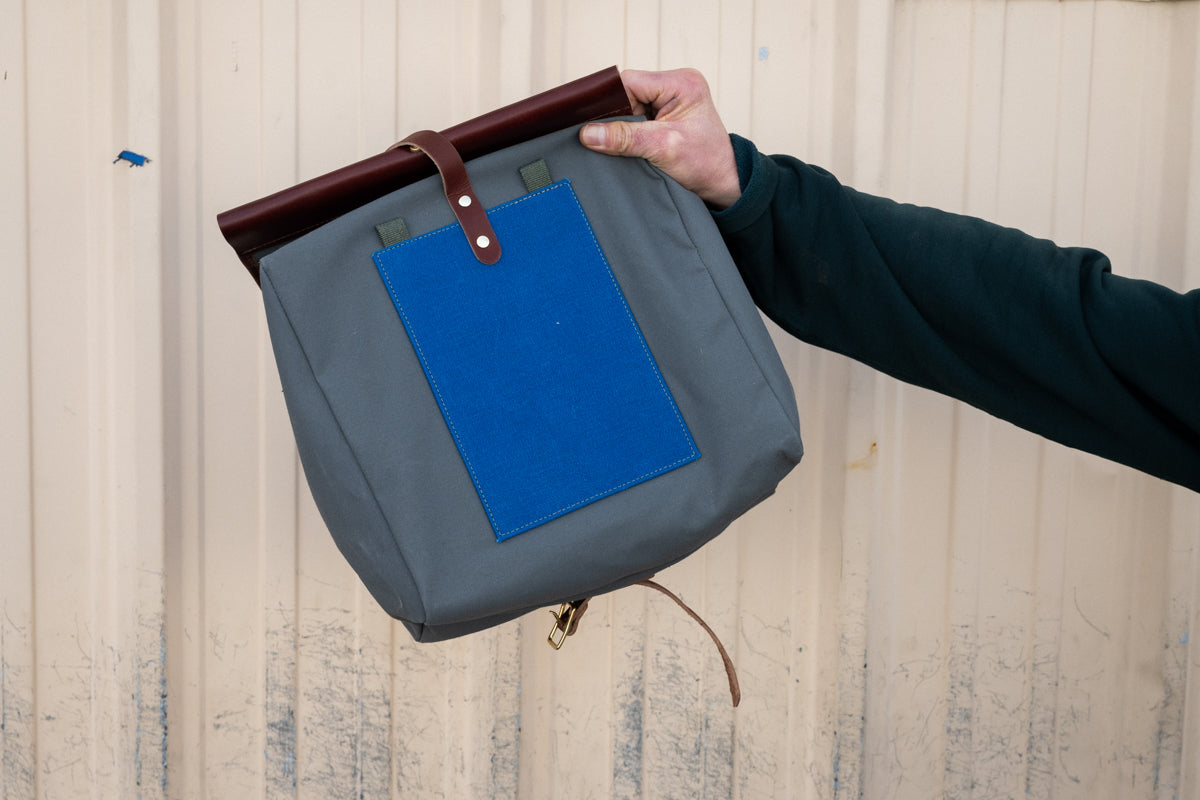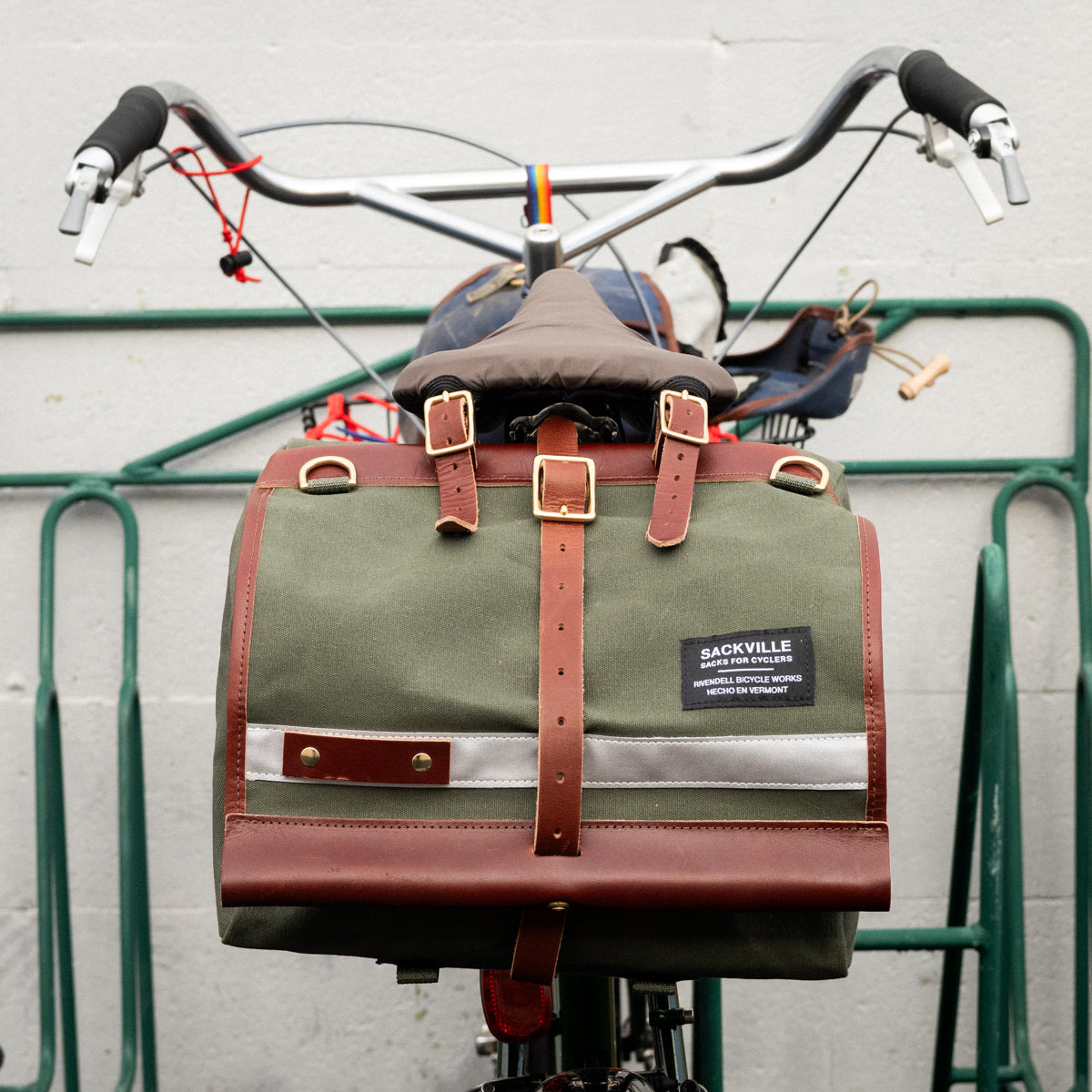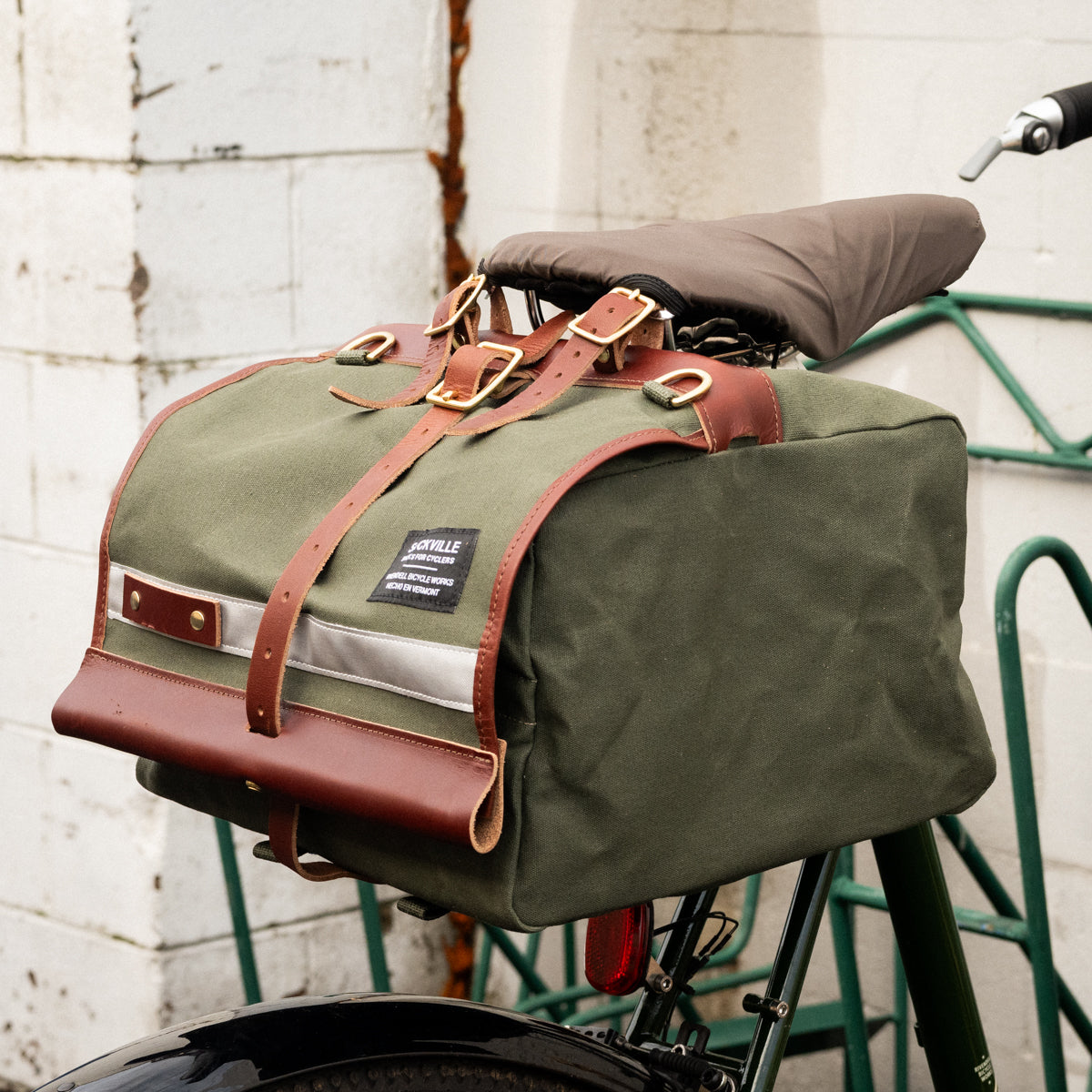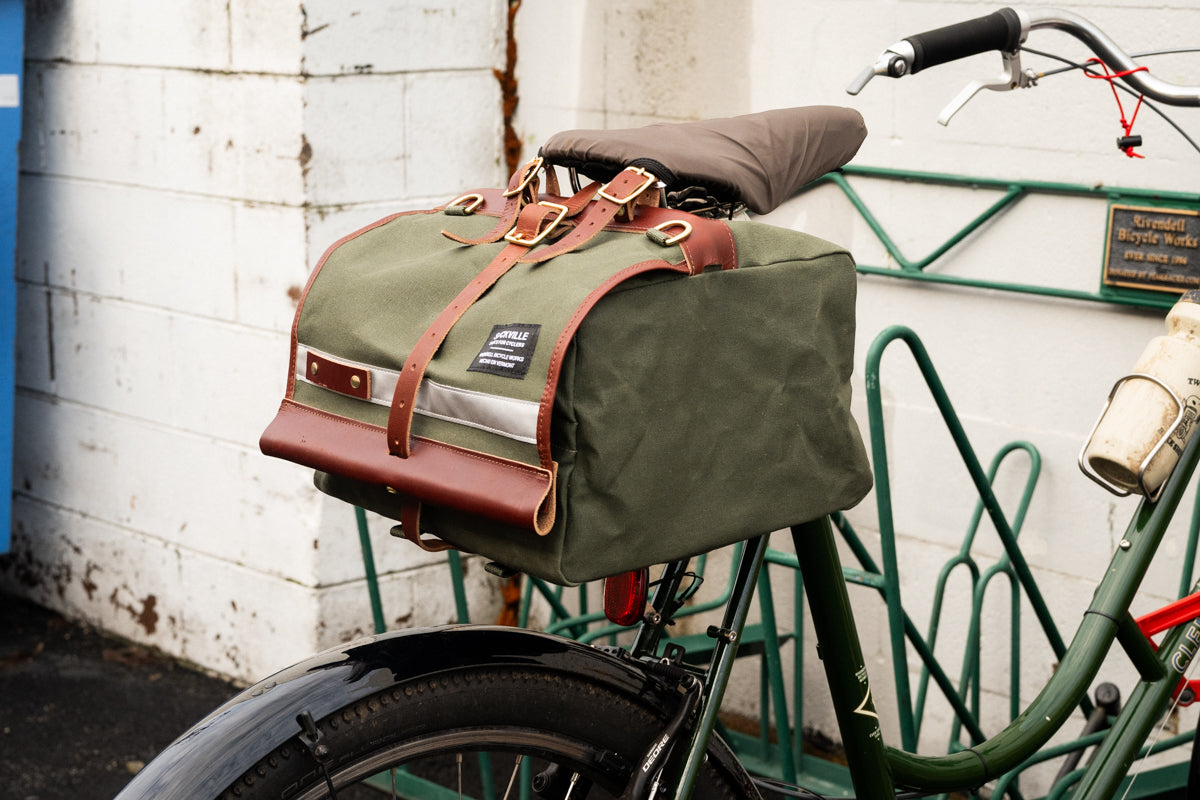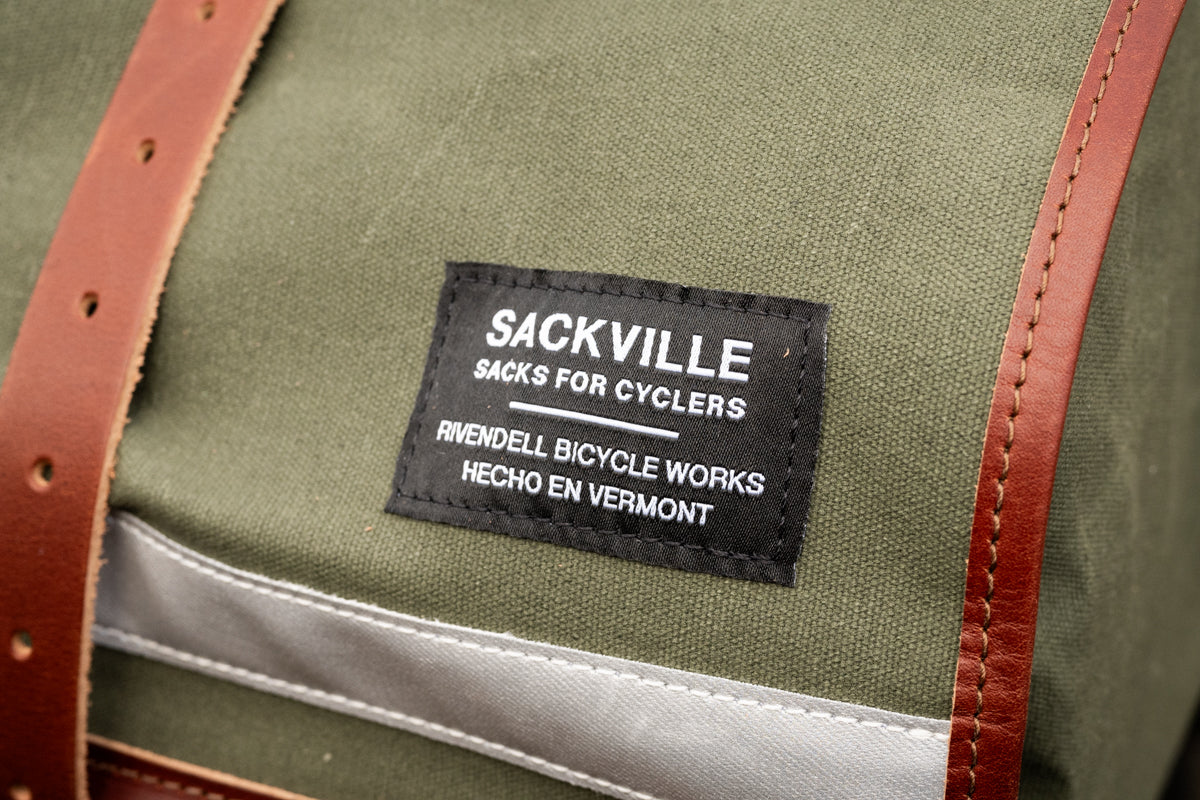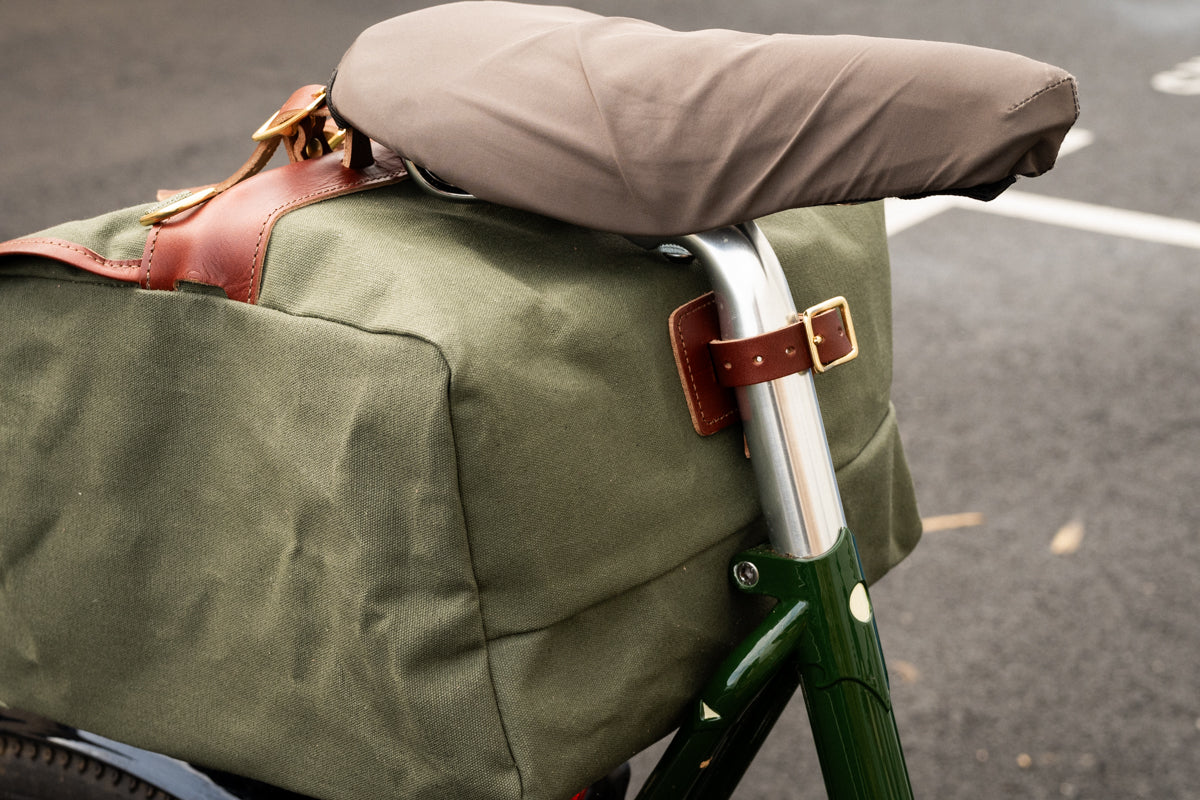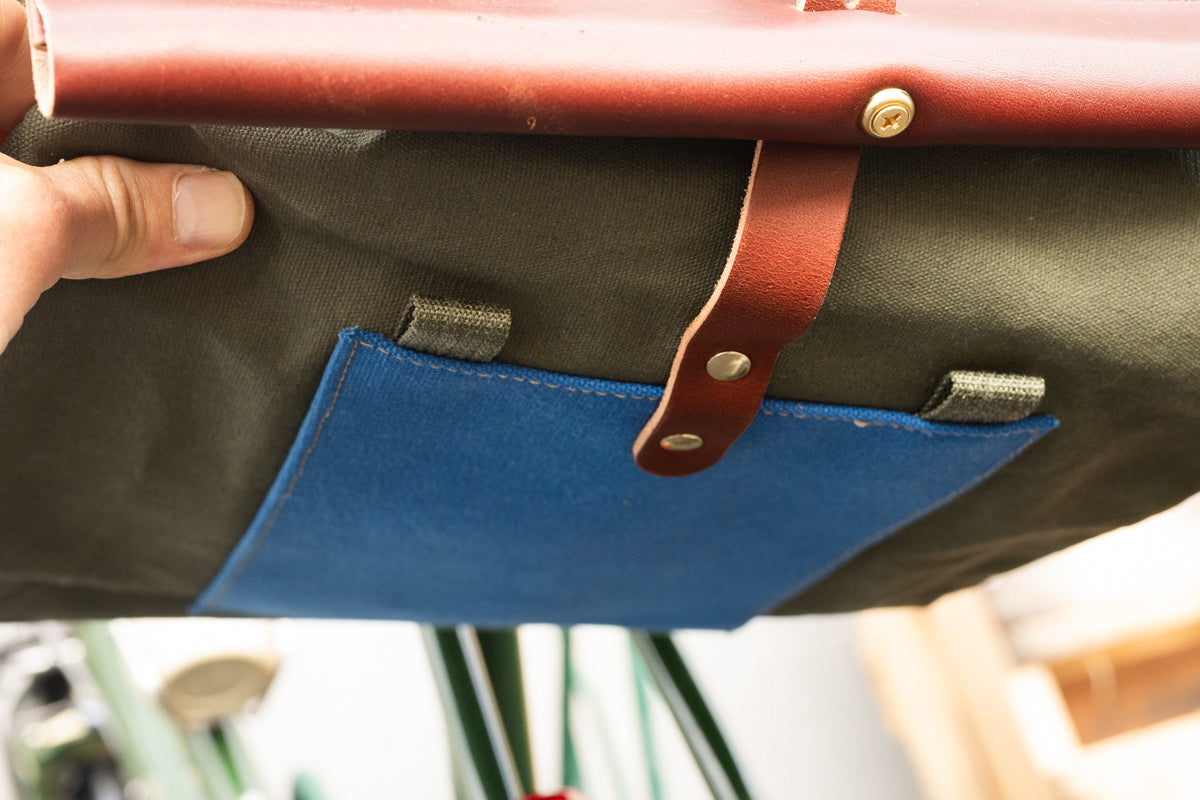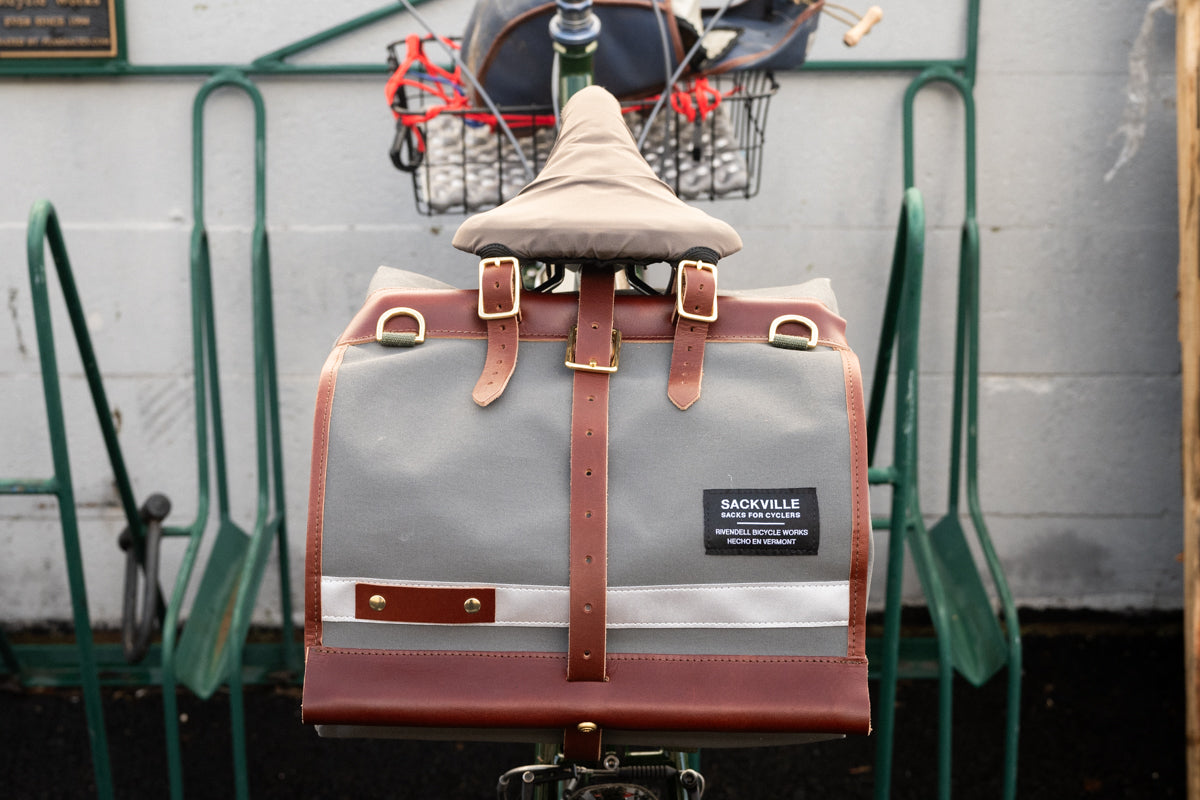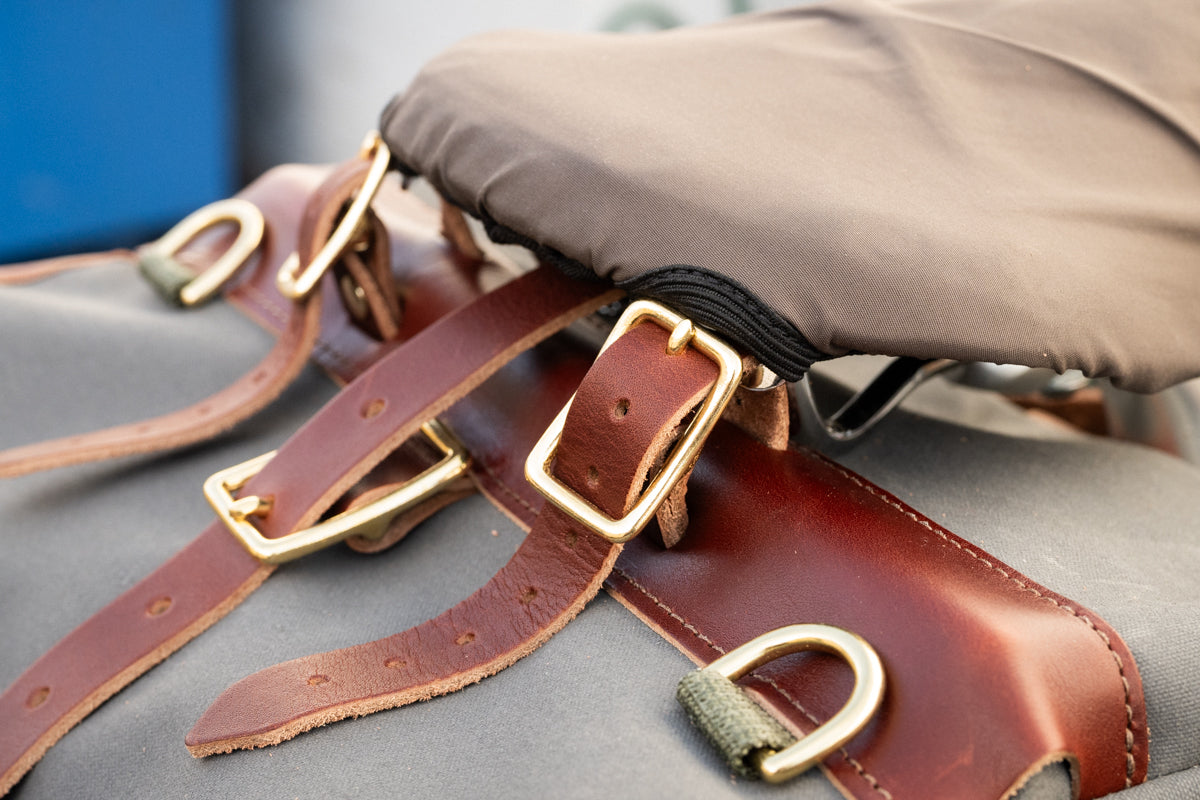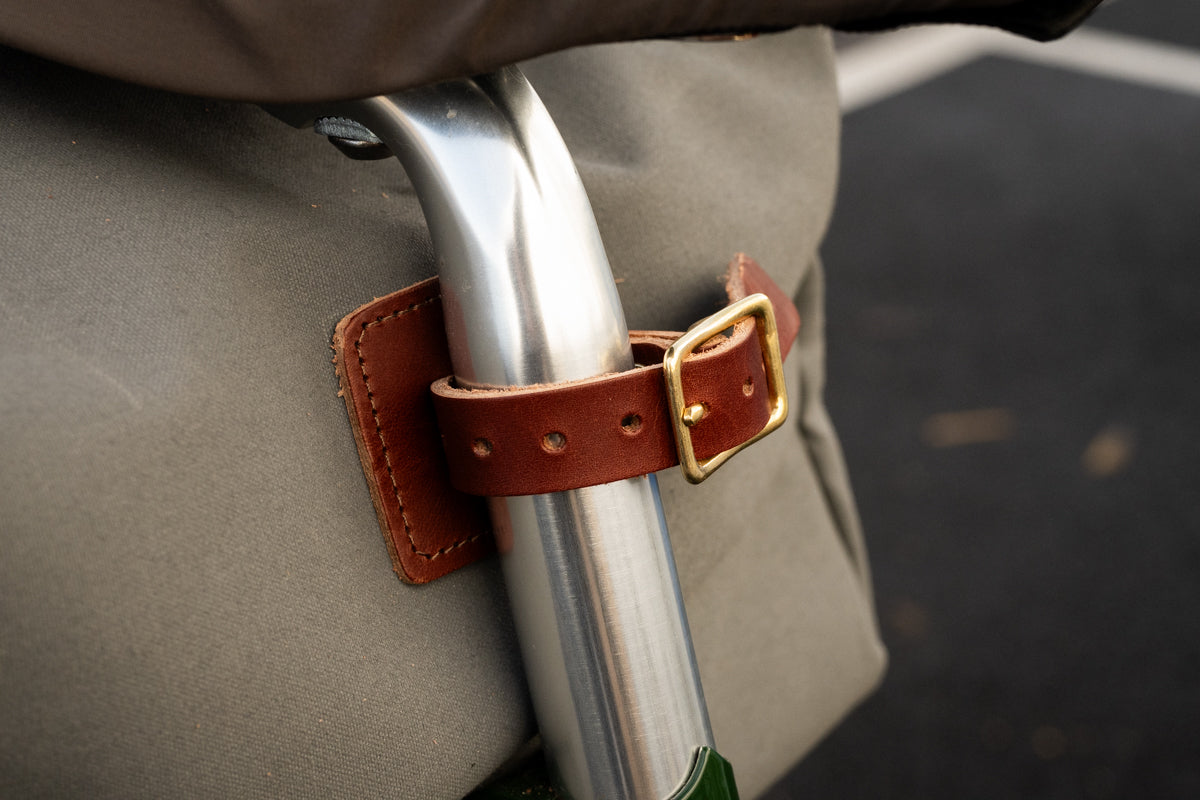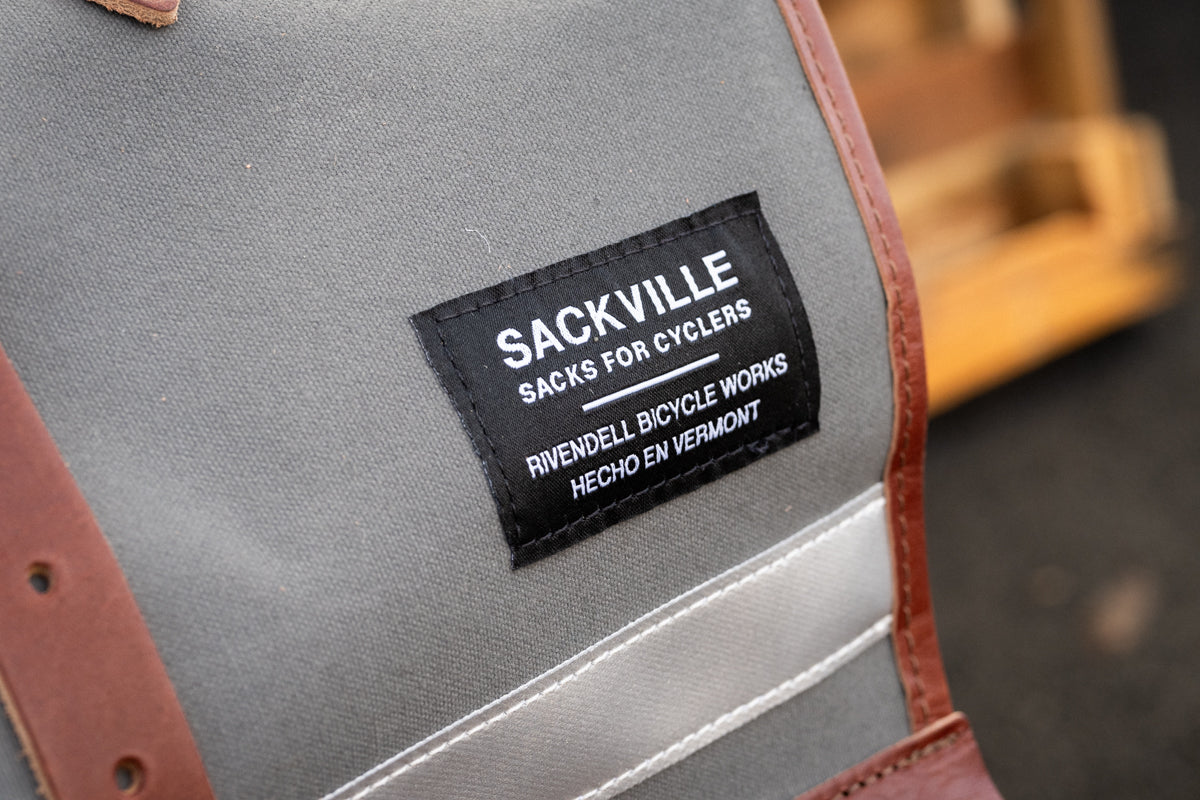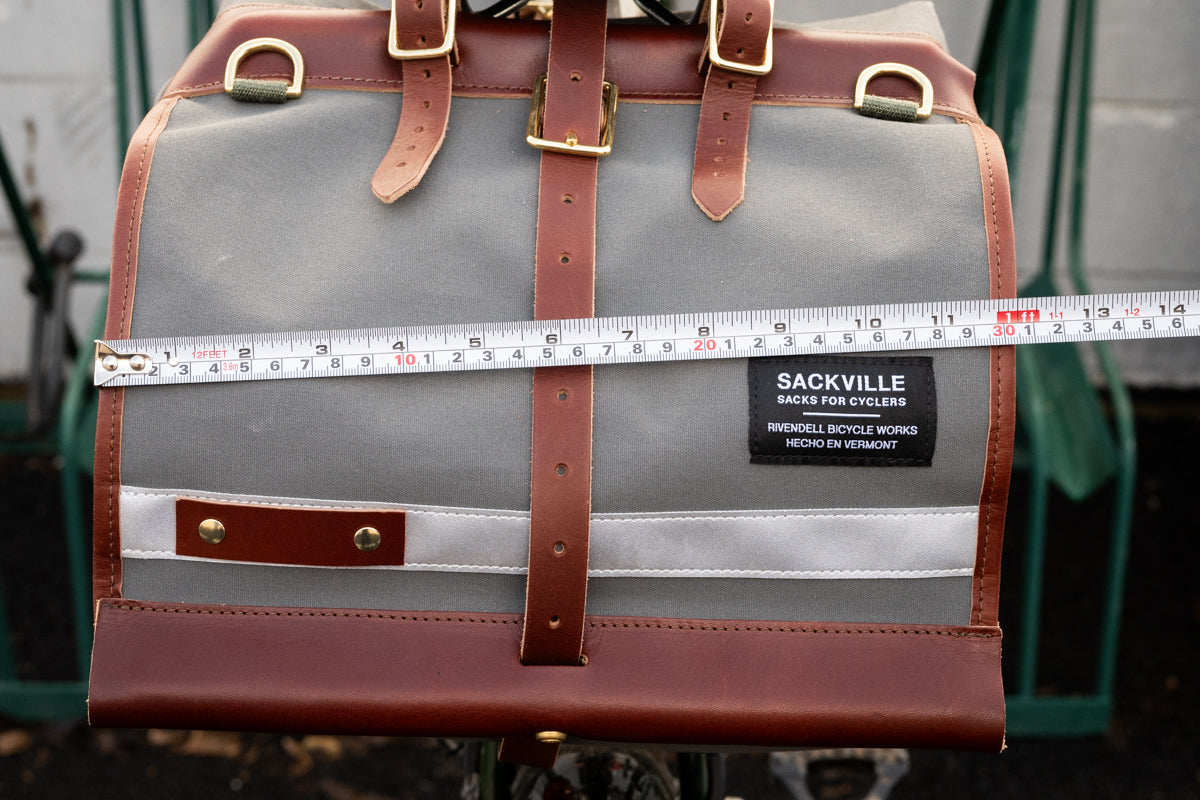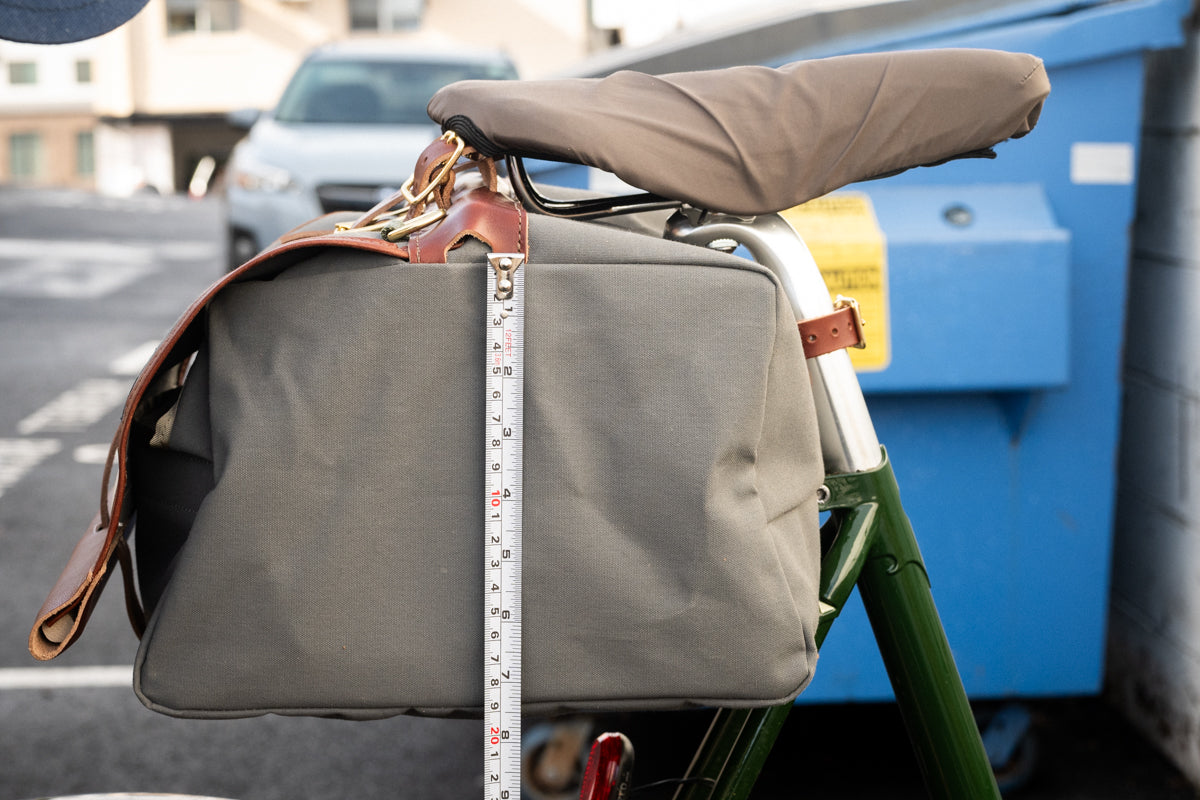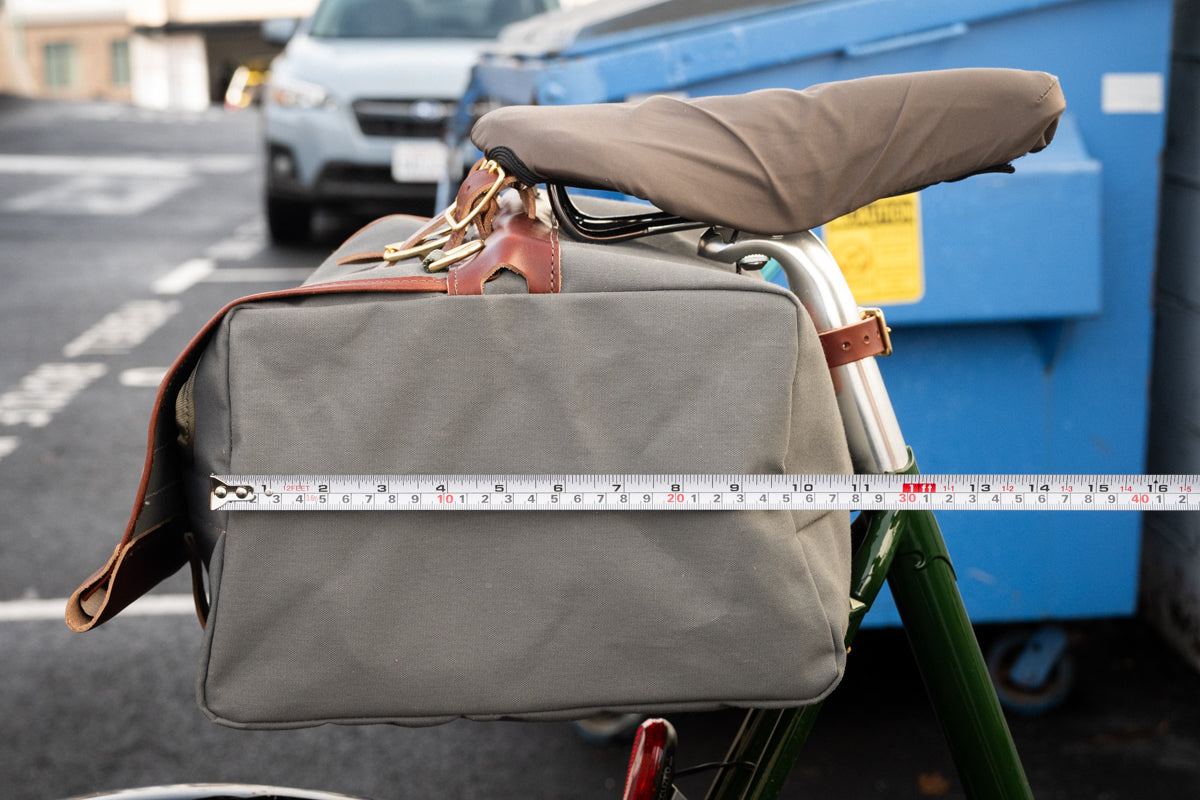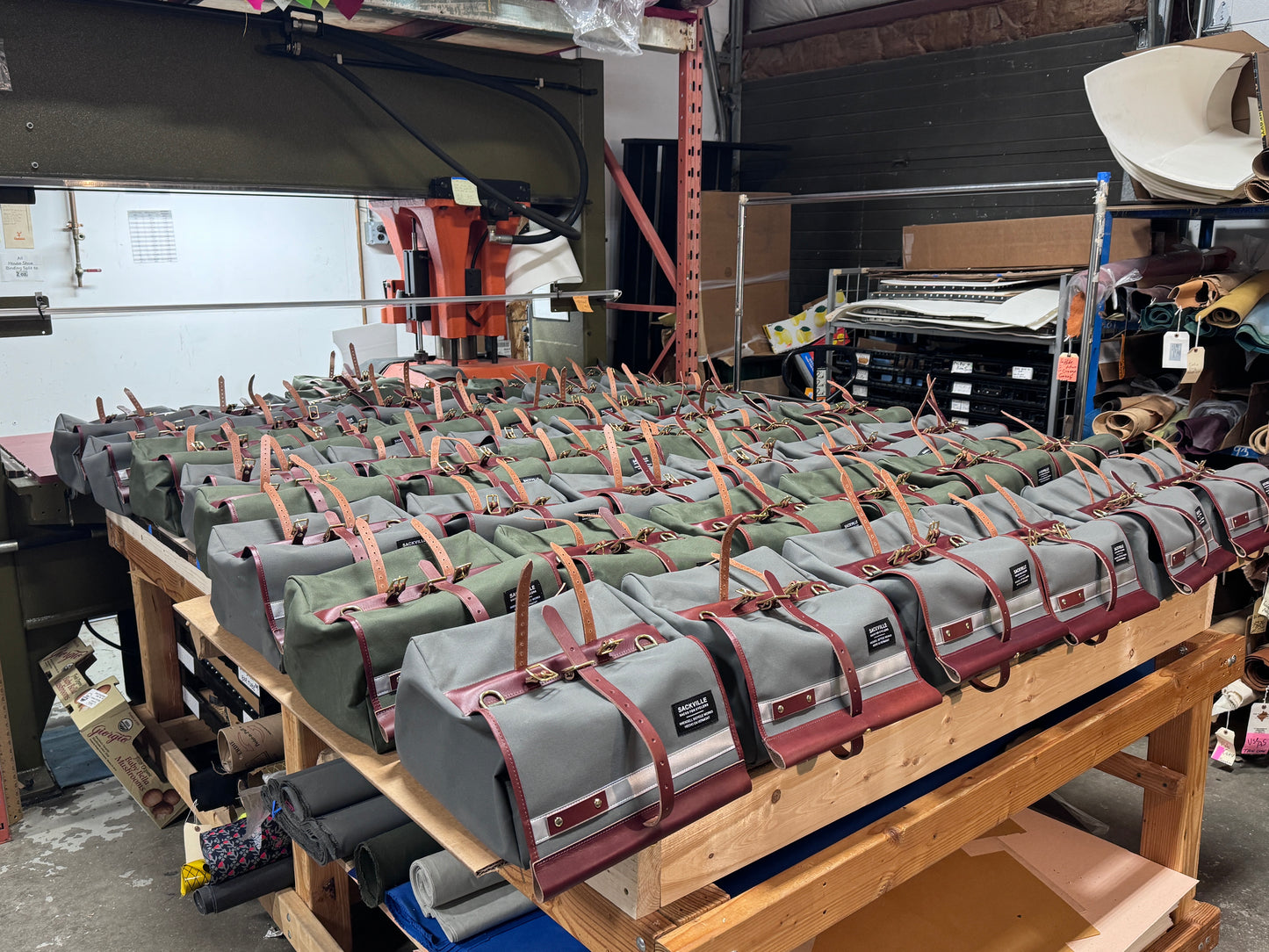Sackville BagBoy SaddleSack
Sackville BagBoy SaddleSack
Couldn't load pickup availability
Sackville Bag Boy
It's 7.25”H x 12W x 11”Deep (front to back). If you're a numbers person, that's maths out to 957 cubic inches, or about 15.7 liters. If those numbers mean nada to you, it holds about a full grocery bag, at least when you raise the lid a bit (easy to do).
It is the most useful around-town saddlesack we sell. It has D-rings on the flap, so you can attach a Sackville Kangaroo pocket for wallet-phone-keys-tools. (Worth $14.24, but you still have to buy the $ KangaPocket)
The underside has an abrasion pad with loops, for tying onto a rack to make it maximally non-sway-y and harder to steal. Or at least slower to steal. (worth $13.26).
If you have 10.25-inches between your saddle's bag loops and the top of the tire, you should be able to load it up and not have it drag. If you have as little as 8-inches, you can tighten the cinch strap and raise the load off the tire. That's why we put it so high up. It's genius.
ALL Sackville Saddlesacks are the result of 30+ years of saddlebag use and obsession. These are our own designs, made without compromise in Vermont. They're expensive, but last decades. They all require a saddle with loops. All modern leather saddles and some plastic ones have them.
OUTER FABRIC: All Sackville bags are made from dry-waxed cotton that's more tightly woven than any waxed cotton made in America. The gaps between threads are so small it hardly needs any wax, and with less wax, it stays much cleaner.
Note: The fabric is tough, highly abrasion-resistant, but if you pack it with sharp things and rattle around on trails like that, a hole will magically appear. This isn't a defect. Pack it well but don't obsess. If you get a hole, fix it yourself with leather or fabric glued or stitched on. It's a tough bag, but it's not steel.
This year's colors are gray and olive. The olive canvas is slightly heavier. The gray bag weighs 1.4lb; the olive, 1.5. Nothing to wring your hands over!
LEATHER: Tough, American top-grain leather tanned and sufficiently oiled to weather well with minimal upkeep. Every couple of years smear some leather goop on it. The best is Obenauf's (we sell it, so do others), but any will do.
OVERALL DESIGN: Like all of our saddlesacks, it sits flat, and there are two benefits. (1) The load doesn't tilt or tend to spill out. Even if you don't use the security of the inner tongue-flap or buckle down the outer flap, the raised lower lip of the lower jaw + a flat bottom holds your stuff in there; (2) You get more usable room directly above the tire. There are no bugs. The bag is perfect without being designed to the needs of the compulsive organizer.
DETAILS: Simple, usable, with sufficient convenience for anybody. Two D-Rings allow for attachment of our removable Kangaroo Pouch pocket — good for wallet, keys, phone, patch kit, a few tools.
FANATICAL STITCHERY: These are made by a genuine American cobbler. Compared to shoes, bags are a piece of cake. No shortcuts
Washing instructions: Let the rain wash it. If it doesn't rain, blast it with a hose for 10 seconds once a year.
Share
